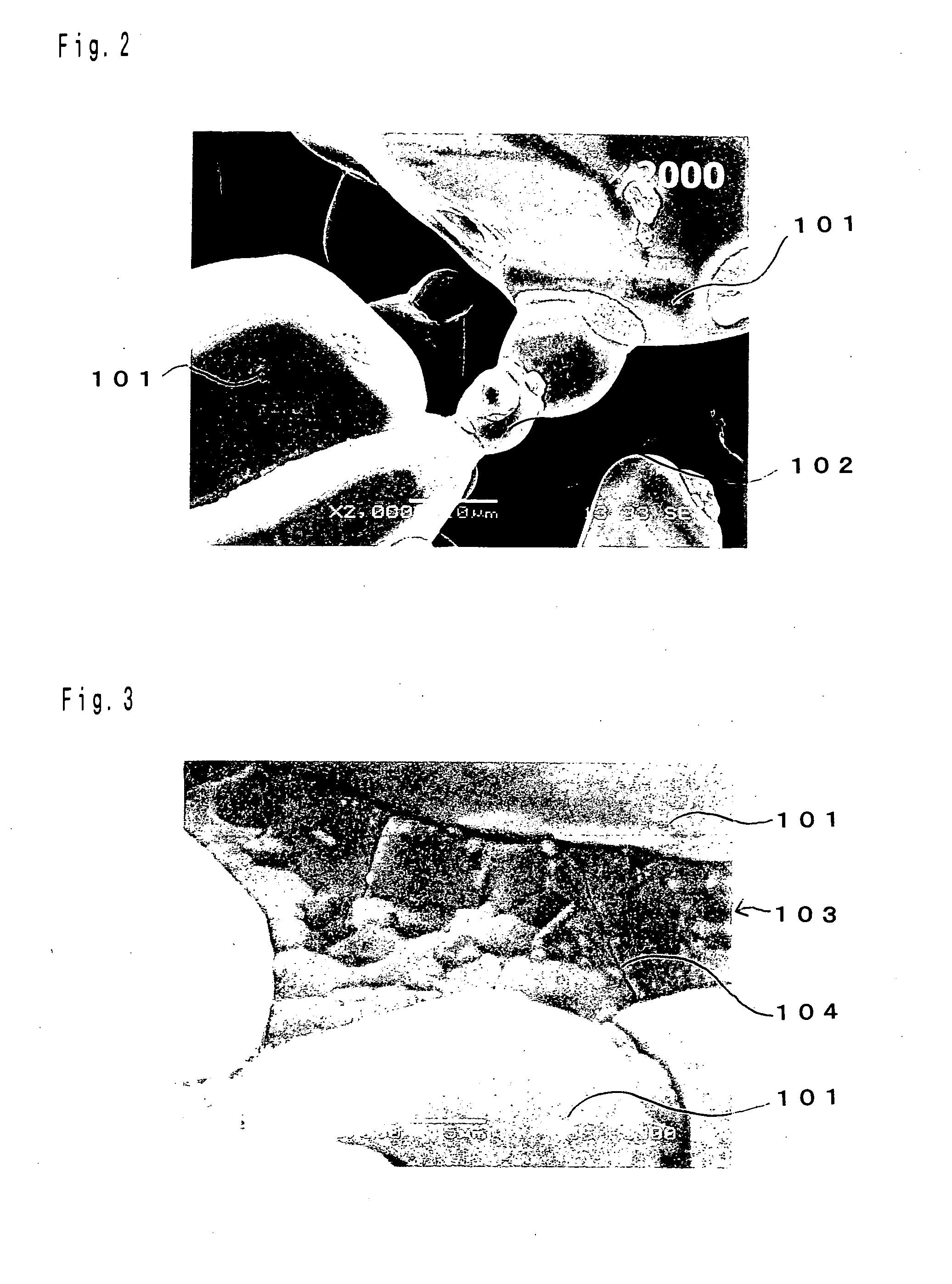Sintered ceramic compact and ceramic filter
a compact and ceramic filter technology, applied in ceramicware, separation processes, machines/engines, etc., can solve the problems of large cracks in the filter itself, exhaust gas leakage, and harmful effects on the environment and the human body, so as to reduce thermal stress, effectively act on the mitigation of thermal shock, and efficiently prevent minute cracks
- Summary
- Abstract
- Description
- Claims
- Application Information
AI Technical Summary
Benefits of technology
Problems solved by technology
Method used
Image
Examples
example 1
of the Present Invention
[0116] (1) A starting material paste is prepared by wet-mixing 70% by weight of α-type silicon carbide powder having an average particle size of 30 μm (silicon carbide coarse particles) with 30% by weight of α-type silicon powder having an average particle size of 0.5 μm (silicon carbide fine particles) and adding and kneading with 15 parts by weight of an organic binder (methyl cellulose) and 20 parts by weight of water based on 100 parts by weight of the resulting mixed powder. The silicon carbide fine particles are prepared by previously acid-cleaning with nitric acid, hydrofluoric acid, hydrochloric acid or the like, and then adding 0.7 parts by weight of iron powder having an average particle diameter of 0.1 μm and particle distribution within ±10% of the average particle size based on 100 parts by weight of silicon carbide fine particles.
[0117] Next, small amounts of a lubricant and a plasticizer are added to the starting material paste, mixed and knea...
reference example 1
[0125] 70% by weight of α-type silicon carbide powder having an average particle size of 30 μm (silicon carbide coarse particles) and 30% by weight of α-type silicon carbide powder having an average particle size of 0.5 μm (silicon carbide fine particles) are wet-mixed, and to 100 parts by weight of the obtained mixture are added and kneaded 15 parts by weight of an organic binder (methyl cellulose) and 20 parts by weight of water to prepare a starting material paste. The above silicon carbide fine particles are prepared by previously acid-cleaning with nitric acid, and then adding 0.7 parts by weight of iron powder having an average particle diameter of 0.1 μm and particle distribution within ±10% of the average particle diameter based on 100 parts by weight of silicon carbide fine particles.
[0126] Next, small amounts of a lubricant and a plasticizer are added to the starting material paste, further mixed and kneaded, and thereafter extrusion-molded to form a ceramic shaped body h...
PUM
| Property | Measurement | Unit |
|---|---|---|
| aspect ratio | aaaaa | aaaaa |
| particle size | aaaaa | aaaaa |
| mean particle size | aaaaa | aaaaa |
Abstract
Description
Claims
Application Information
 Login to View More
Login to View More - R&D
- Intellectual Property
- Life Sciences
- Materials
- Tech Scout
- Unparalleled Data Quality
- Higher Quality Content
- 60% Fewer Hallucinations
Browse by: Latest US Patents, China's latest patents, Technical Efficacy Thesaurus, Application Domain, Technology Topic, Popular Technical Reports.
© 2025 PatSnap. All rights reserved.Legal|Privacy policy|Modern Slavery Act Transparency Statement|Sitemap|About US| Contact US: help@patsnap.com



